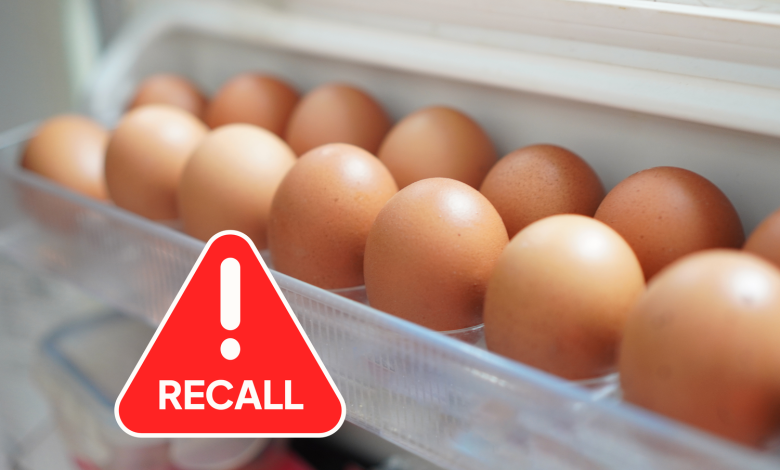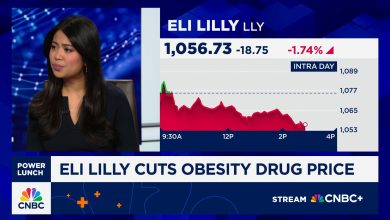FDA Flags 6 Million Eggs for Urgent Recall Over Safety Concerns

In a stunning development that has rattled consumers and retailers across the United States, the Food and Drug Administration (FDA) has issued an urgent nationwide recall involving over six million eggs. The recall, categorized as a **Class I recall—the FDA’s highest risk level—**was prompted by potential contamination linked to salmonella, a dangerous pathogen known to cause serious and sometimes fatal infections.
This recall underscores growing concerns about food safety, supply chain oversight, and public health preparedness. As millions of households rely on eggs as a daily staple, the magnitude of this recall has triggered questions about how such a large-scale contamination occurred, what steps are being taken to mitigate the risks, and what consumers can do to stay safe.
The Recall: What Happened and Why It Matters
The FDA’s recall announcement, issued late Friday, detailed that approximately six million eggs distributed under multiple brand names were being voluntarily withdrawn from stores and restaurants due to concerns over possible salmonella enteritidis contamination.
According to the agency, the recall affects eggs packaged between September 15 and October 3, with distribution spanning more than a dozen states, including California, Texas, New York, Illinois, and Florida. These eggs were sold in both retail supermarkets and supplied to food service establishments such as diners, hospitals, and school cafeterias.
The agency’s official statement emphasized that the decision followed routine testing and traceability analysis, which indicated “a strong likelihood of contamination” originating from a single large-scale farm operation. The FDA has not yet publicly named the farm pending further investigation but confirmed that production has been temporarily suspended as inspectors assess the facility’s compliance with federal safety protocols.
This is not the first time the FDA has had to recall eggs on such a scale—but it is among the largest in recent years, and the first major one since 2018, when nearly 200 million eggs were recalled for similar contamination concerns.
Understanding Salmonella: The Hidden Danger
Salmonella is a type of bacteria that can cause serious gastrointestinal illness when ingested through contaminated food products, particularly raw or undercooked eggs, poultry, and meat.
According to the Centers for Disease Control and Prevention (CDC), salmonella infections affect roughly 1.35 million Americans each year, leading to 26,500 hospitalizations and 420 deaths.
Symptoms typically appear six hours to six days after consuming contaminated food and include:
- Severe diarrhea
- Abdominal cramps
- Fever
- Nausea and vomiting
- Fatigue and dehydration
While healthy adults often recover within a week, infants, elderly individuals, and people with weakened immune systems face a much higher risk of severe complications, including bloodstream infections that can be life-threatening.
The particular strain associated with this recall—salmonella enteritidis—is one of the most common forms linked to egg-related outbreaks. The bacteria can contaminate eggs internally (through infected hens) or externally (via unsanitary conditions during processing).
Tracing the Source: What Went Wrong
Preliminary findings suggest that the contamination may have originated from sanitation lapses at a large-scale egg production facility, possibly involving compromised equipment or cross-contamination between batches.
An FDA spokesperson confirmed that samples taken from the farm’s processing line tested positive for salmonella, prompting the recall. Investigators are currently analyzing whether the bacteria entered through:
- Contaminated feed or water,
- Improperly disinfected egg handling equipment, or
- Infected laying hens in the flock.
The agency is also coordinating with state agricultural departments and local health authorities to trace the eggs’ distribution network. Early reports indicate that several brands may have sourced eggs from the same supplier, increasing the potential reach of the contamination.
Impacted Brands and Distribution
While the FDA’s investigation is ongoing, early data show that the recall involves multiple retail and private-label brands distributed nationwide. Some affected cartons were labeled with the following plant and Julian date codes (as printed on egg cartons):
- Plant number: P-1946, P-1028, or P-1951
- Julian date range: 258 to 276
Consumers can find these numbers printed on the side of the carton near the expiration date. If your carton matches these details, the FDA urges you not to consume the eggs and to dispose of them immediately or return them to the place of purchase for a full refund.
To ensure transparency, the FDA is maintaining an updated recall database on its official website, listing affected brands, lot codes, and retailers involved in the recall.
How the Recall System Works
When a potential contamination is detected, the FDA’s Recalls, Market Withdrawals, and Safety Alerts system activates a multi-step process designed to protect consumers as quickly as possible.
Here’s how it typically unfolds:
- Detection: Routine inspection or testing identifies contamination or violations.
- Risk Assessment: FDA scientists assess the severity—Class I recalls are the most urgent, indicating a risk of serious illness or death.
- Notification: The manufacturer issues a voluntary recall, often in coordination with the FDA.
- Public Alert: The FDA releases official recall notices, and distributors remove affected products from circulation.
- Follow-Up: The agency monitors corrective actions and conducts further testing to ensure safety before production resumes.
In this case, the egg recall was classified as a Class I—the highest alert level—meaning the contaminated product poses a significant health hazard.
Consumer Guidance: What You Should Do Now
If you have purchased eggs recently, the FDA advises the following:
- Check your cartons immediately. Look for the plant code and Julian date to determine if your batch is affected.
- Do not eat the eggs. Even if they appear clean, odorless, or properly refrigerated, salmonella cannot be detected by sight or smell.
- Dispose of contaminated eggs safely. Place them in a sealed plastic bag and discard them in a covered trash bin to prevent cross-contamination.
- Clean thoroughly. Wash hands, refrigerator shelves, and any surfaces that may have come into contact with the eggs using hot, soapy water.
- Monitor your health. If you or someone in your household experiences symptoms of salmonella infection, contact a healthcare provider immediately.
The FDA also reminds consumers to cook eggs thoroughly—both yolks and whites should be firm—and to avoid consuming raw or undercooked eggs in dishes such as homemade mayonnaise, Caesar dressing, or raw cookie dough.
Industry Reaction and Economic Impact
The recall has sent shockwaves through the egg industry, which was already grappling with high feed costs, avian influenza outbreaks, and volatile consumer demand.
Major retailers including Walmart, Kroger, and Target have issued their own public statements confirming removal of the affected batches from shelves. Restaurants and bakeries dependent on large egg supplies have also begun sourcing replacements, though the sudden recall has created temporary supply shortages in some regions.
Agricultural analysts warn that the recall could have a short-term impact on egg prices, which were beginning to stabilize after record inflation in 2023–2024. According to market watchers, wholesale egg prices have already jumped 8% in the week following the recall announcement.
Meanwhile, consumer trust remains a major concern. Food safety advocacy groups have called for stricter inspection standards and greater transparency in the food supply chain.
Government Oversight and Accountability
The FDA and the U.S. Department of Agriculture (USDA) share joint responsibility for regulating egg safety. The FDA oversees shell eggs at the production and retail levels, while the USDA handles egg products used in processed foods.
Following the recall, both agencies have vowed to strengthen oversight of large-scale egg farms and enforce compliance with the Egg Safety Rule—a set of regulations designed to prevent contamination from farm to table.
Under this rule, farms with more than 3,000 laying hens are required to:
- Implement strict biosecurity measures
- Maintain cleaning and disinfection protocols
- Conduct routine salmonella testing
- Refrigerate eggs promptly after collection
Violations can result in fines, suspension, or even criminal penalties.
FDA Commissioner Dr. Robert Califf stated in a recent briefing:
“Food safety is a shared responsibility. We will ensure that every producer involved is held accountable and that corrective actions are taken to prevent this from happening again.”
A Look Back: Historical Context of Egg Recalls
Egg recalls are not new, but their scale and frequency reflect broader issues in industrial farming and supply chain management.
- 2010: Over 500 million eggs were recalled after a massive salmonella outbreak traced to two Iowa farms sickened more than 1,900 people.
- 2018: Nearly 200 million eggs from a North Carolina farm were recalled due to salmonella enteritidis contamination.
- 2023: Smaller regional recalls affected organic and cage-free brands following sporadic contamination findings.
Each of these cases led to renewed scrutiny and prompted policy reforms, yet experts argue that systemic weaknesses persist, especially regarding traceability and environmental controls in mega-farms that produce millions of eggs per day.
Expert Insights: How to Prevent Future Outbreaks
Food safety experts stress that preventing contamination requires a multi-layered approach involving government oversight, industry accountability, and consumer awareness.
Dr. Hannah Keller, a microbiologist specializing in foodborne pathogens, explains:
“Salmonella control isn’t just about one inspection or one farm—it’s about creating a culture of safety that starts with the hatchery and continues all the way to your breakfast table.”
Experts recommend:
- Enhanced surveillance: Regular testing of feed, water, and environmental samples.
- Stronger hygiene protocols: Cleaning and disinfection routines for all egg-handling equipment.
- Worker training: Ensuring that farm staff understand contamination risks.
- Public education: Teaching consumers about safe egg storage and preparation.
Consumer Confidence and Moving Forward
In the wake of the recall, the FDA has assured the public that no fatalities have been reported so far, though several dozen suspected cases of salmonella illness are under investigation across multiple states.
The agency is urging calm but caution, emphasizing that prompt reporting and public transparency are essential to containing potential outbreaks.
Egg producers have also pledged to cooperate fully with the investigation and to enhance safety controls moving forward. Some companies have already announced plans to adopt blockchain-based traceability systems, allowing faster identification and recall of contaminated batches in the future.
The Broader Picture: Food Safety in America
This recall has reignited a national conversation about the safety of America’s food supply, particularly in high-volume agricultural sectors.
While the United States maintains one of the most advanced food regulatory systems in the world, experts note that the sheer scale of industrial food production creates vulnerabilities that require constant vigilance.
The FDA continues to invest in data-driven inspection models and collaborative networks with state and local agencies. Meanwhile, consumer awareness and proper food handling remain crucial components of prevention.
As one FDA official summarized:
“Recalls like this are serious, but they also show that the system is working. It’s better to act fast, recall, and prevent illness than to risk widespread infection.”
Final Thoughts: A Wake-Up Call for Food Safety
The 6 million-egg recall is a stark reminder that food safety is a collective responsibility—from farms and regulators to consumers themselves.
While the immediate health risk is being actively managed, the long-term challenge lies in ensuring tighter control, accountability, and public trust in the nation’s food supply chain.
Consumers are encouraged to stay informed, follow FDA updates, and practice safe food handling. At the same time, the incident highlights the importance of ongoing investment in inspection technologies, sanitation infrastructure, and transparent communication between industry and regulators.
In a world where a single farm can distribute millions of eggs nationwide, vigilance is not optional—it’s essential. The recall may cause temporary disruption, but it could also serve as a turning point toward a safer, more transparent food system for everyone.




